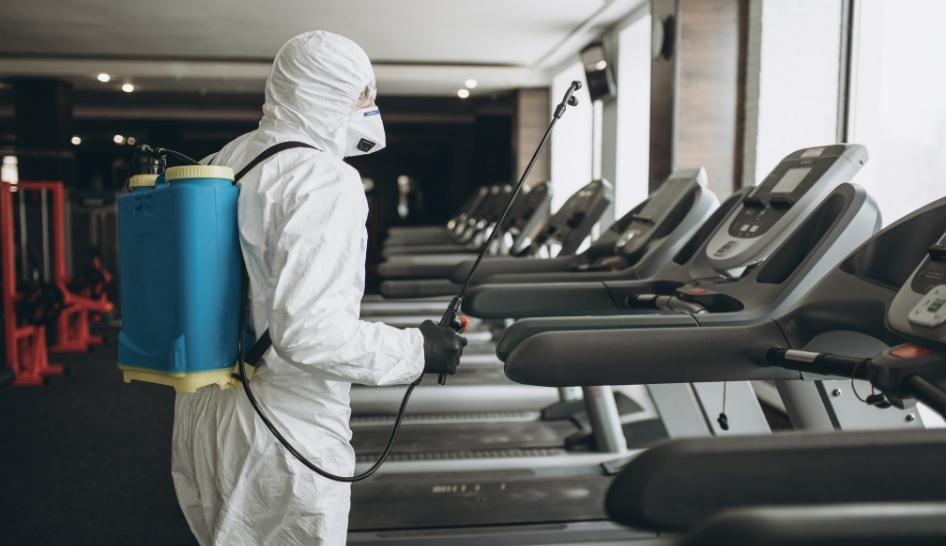Both the World Health Organization (WHO) and U.S. Centers for Disease Control and Prevention (CDC) say that COVID-19 is primarily transmitted via respiratory droplets from the nose and mouth—often during close contact—and fomites. Respiratory droplets refer to particles greater than 5-10 micrometers in size, while fomites are infected droplets left on surfaces.
Since early spring, scientists have hypothesized that SARS-CoV-2, the virus causing COVID-19 can also spread via aerosols, or very small airborne particles—less than 5 micrometers in size—which can linger in the air longer than denser respiratory droplets.
Aerosols & Gyms: What We Currently Know
The WHO currently states that transmission via aerosols in closed indoor spaces with poor ventilation cannot be ruled out, and that “more studies are urgently needed to investigate such instances and assess their significance for transmission of COVID-19.” On October 5, 2020, the CDC updated their “How COVID is Spread” page to acknowledge the existence of uncommon circumstances in which airborne particles have potentially transmitted COVID-19, noting these instances occurred in enclosed, poorly ventilated spaces and often involved activities causing heavier breathing. The CDC has not changed any recommendations based on this update.
Several studies have demonstrated that SARS-CoV-2 forms aerosols that can linger in the air. However, scientists do not know what proportion of exhaled droplets from speaking, breathing, or singing evaporate to form aerosols, nor what dose of infected aerosol particles would result in a COVID-19 infection.
For example, in studies published in the journal Aerosol and Air Quality Research and the International Journal of Infectious Disease, scientists sampled the air and found SARS-CoV-2 in the Student Healthcare Center (SHCC) at the University of Florida (UF) and in a COVID-19 patient’s hospital room.
A Device to Test the Air for SARS-CoV-2
The studies used a device, developed by Chang-Yu Wu, Ph.D., and John Lednicky, Ph.D., along with Aerosol Dynamics Inc., that is capable of efficiently sampling airborne particles of the virus that causes COVID-19. It works by gently collecting airborne viruses and preserving their viability using water vapor condensation-based technology, something that is not possible using other devices. You can see the air sampling device in action in the cardio area at IHRSA member club Gainesville Health & Fitness Center, one of the sites from which researchers collected air samples.

